
Roots
The subtle whispers of history often resonate most clearly in the seemingly mundane aspects of daily existence. For ancient Egyptians, the way hair was worn, tended, or even absent, spoke volumes. It was more than mere adornment; it served as a living canvas, a dynamic expression of social standing, religious piety, and indeed, one’s passage through life’s various seasons. This profound connection between personal presentation and societal positioning invites us to look beyond surface appearances, seeking deeper meanings in every strand and style.
The fundamental relationship between Egyptians and their hair began with an understanding of its very structure and growth. While not possessing modern scientific classifications, their practices demonstrated an intuitive grasp of hair care principles. Hair, whether natural or augmented, was a symbol of vitality, health, and status. Its presence or absence, its length, and its elaborate styling were all deliberate choices within a highly ordered society.
Hair in ancient Egypt transcended simple grooming, serving as a powerful visual code for status, spiritual connection, and the progression through life.

Hair Anatomy and Daily Care
The natural hair of ancient Egyptians, like many populations, exhibited a range of textures. The dry, arid climate of Egypt necessitated specific care to maintain scalp health and hair condition. Records indicate the use of various oils and unguents derived from plants like almond and castor, applied to keep hair moisturized and to protect the scalp from the intense sun. These practices were not simply about aesthetics; they were about comfort and maintaining hygiene in a challenging environment.
Combs, often crafted from wood, bone, or ivory, were essential tools for detangling and applying these conditioning treatments. Some combs from predynastic times were even fashioned from fish bones.
A widespread practice, particularly among the elite and priestly classes, involved shaving the head entirely or keeping hair very short. This was not a sign of hair loss or neglect, but a deliberate choice for cleanliness and comfort. Wigs, then, became indispensable.
These intricate creations provided both protection from the sun and a means to display elaborate styles without the constant upkeep of natural hair. They also offered a practical solution to deter head lice, a common concern in ancient times.

Tools and Materials of Adornment
The creation and maintenance of ancient Egyptian hairstyles and wigs involved a sophisticated array of tools and materials. From early periods, artisans crafted implements that speak to a high level of skill and attention to personal presentation.
- Combs ❉ Found in tombs dating back to predynastic times, combs were fundamental. They varied from simple, single-sided designs to more elaborate double-sided versions, often made from wood, bone, or ivory.
- Razors ❉ For shaving natural hair, Egyptians used blades that evolved from stone to copper, and later, bronze. The practice of shaving was prevalent, especially among priests who maintained complete body hair removal for ritual purity.
- Hairpins ❉ These implements, crafted from materials such as bone, ivory, wood, and even precious metals like gold and silver, secured elaborate styles or wigs. While predominantly associated with women, archaeological finds show their occasional use by men.
- Wig-Making Materials ❉ Wigs were meticulously constructed from human hair, sheep’s wool, or plant fibers. Human hair was a valuable commodity, often bought for wig creation. Beeswax and resin were used as setting agents to hold styles in place.
The presence of these tools and materials in burial contexts underscores their significance, not just for earthly life but also for the afterlife.
| Tool Combs |
| Primary Material Wood, Bone, Ivory, Fish Bone |
| Purpose Detangling, styling, applying oils, removing impurities |
| Tool Razors |
| Primary Material Stone, Copper, Bronze |
| Purpose Shaving natural hair for hygiene or style |
| Tool Hairpins |
| Primary Material Bone, Ivory, Wood, Gold, Silver, Bronze |
| Purpose Securing hair, holding wigs, decorative elements |
| Tool Curling Tongs |
| Primary Material Metal |
| Purpose Creating waves and curls in natural hair or wigs |
| Tool These tools reflect a society that placed high value on personal grooming and appearance. |

Ritual
Stepping into the realm of ancient Egyptian hair practices feels akin to entering a carefully choreographed performance, where every gesture and adornment held specific weight. Beyond the daily act of grooming, hair became a medium for expressing cultural values, social standing, and even spiritual beliefs. The application of oils, the sculpting of wigs, the careful placement of adornments – each element contributed to a grander tableau, reflecting a society deeply attuned to symbolism and order. It is within these routines, both public and private, that we begin to discern the whispers of age and life stage.
The care of hair was deeply intertwined with notions of purity and presentation. While the elite often employed professional hairdressers and barbers, even ordinary individuals engaged in routines to maintain their appearance. The sheer effort and resources dedicated to hair, whether natural or artificial, underscore its profound cultural importance.

Daily Grooming and Personal Presentation
For many Egyptians, daily hair care was a significant part of their personal hygiene. They washed their hair with a mixture of water and citrus juice, sometimes adding a soap-like substance. After cleansing, oils like almond, moringa, and castor were applied to keep hair supple and healthy.
These routines were particularly vital in the hot climate, helping to protect the scalp and hair from dryness and damage. The emphasis on cleanliness extended to the widespread practice of shaving the head, especially among priests, to reduce the incidence of head lice and maintain ritual purity.
The choice between natural hair and wigs often depended on social standing and occasion. While women, particularly in the New Kingdom, were depicted with long, plaited, or curled natural hair, wigs were universally popular among the wealthy for both sexes. These wigs, sometimes weighing up to 3 kilograms, were meticulously crafted and adorned, signaling the wearer’s affluence and prestige.

Hair in Ceremonial and Social Contexts
Beyond personal grooming, hair played a prominent role in various ceremonial and social events. The distinct styles adopted for different occasions served as visual cues, communicating information about the wearer’s status, role, and even emotional state.
For instance, in funerary rites, hair took on profound symbolic meaning. Mourners, particularly women, were often depicted with disheveled hair, or seen pulling at their hair and sprinkling ashes upon it as expressions of sorrow. This act of disarray symbolized the chaos and disorder associated with death, a stark contrast to the typically ordered appearance maintained in life. The word “s3mt,” appearing in funerary texts, relates to a lock of hair and mourning, linking the physical act of manipulating hair to the ritual of grieving and the hope of resurrection.
Ancient Egyptian hair rituals served as profound expressions of social standing, spiritual connection, and the deep emotional landscape of human experience.
Conversely, during celebrations and religious ceremonies, elaborate wigs and adorned natural hair were common. Elite women wore complex styles, sometimes featuring gold tubes, rosettes, or beads. These decorations, along with coronets and diadems, further underscored their high social standing and participation in important public events.
- Ceremonial Wigs ❉ Often worn by royalty and religious figures during official ceremonies, these wigs were symbols of power and authority, meticulously cared for with scented oils.
- Hair Offerings ❉ Locks of hair, sometimes braided, were found in tombs, serving as offerings to the deceased. This practice, dating back to the Predynastic Period, suggests a belief in hair’s magical power to protect or assist the departed.
- Mourning Practices ❉ The ritualistic disheveling or cutting of hair by mourners, especially women, was a visual manifestation of grief and the disruption caused by death.
The visual evidence from tomb paintings and reliefs offers a window into these practices, revealing how hair was not merely a personal choice but a carefully constructed social statement.
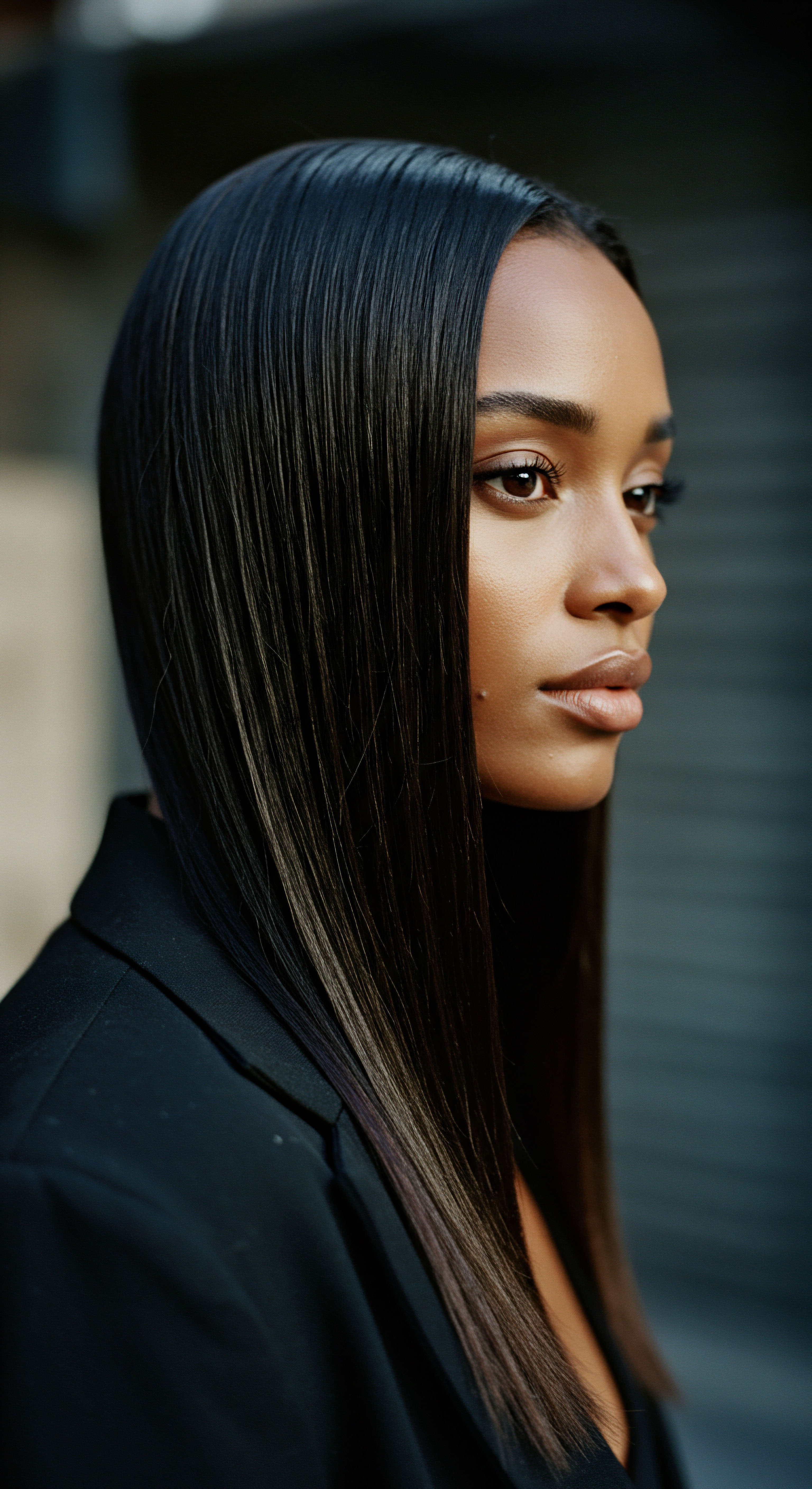
Relay
How profoundly did the coiffure of an ancient Egyptian speak to their place in the arc of life? This question invites us to look beyond the immediate aesthetic, considering hair as a language, a series of visual markers that communicated identity within a structured society. The answer lies not in simple, direct declarations, but in the subtle yet consistent patterns discernible across archaeological findings, artistic representations, and surviving texts. Hair practices indeed held significant meaning, often signaling a person’s progression from childhood to adulthood, and even their standing within the social hierarchy.
The dry climate of Egypt has remarkably preserved human remains, including hair, offering a unique opportunity to study these ancient practices directly. Coupled with extensive tomb paintings and reliefs, which served as idealized portrayals of life and the afterlife, we can piece together a compelling picture of how hair was used to convey information about an individual’s age and life stage.

Childhood’s Mark The Sidelock of Youth
Perhaps the most definitive indicator of age in ancient Egyptian hair practices was the “sidelock of youth.” This distinctive style, worn by both boys and girls, involved shaving the head almost entirely, leaving a single, long lock of hair on one side, typically the right. This lock was often braided or curled and sometimes adorned with amulets, presumably for protection.
The sidelock was more than a cute hairstyle; it was a powerful symbol. It visually identified the wearer as a child, still under the care and protection of their parents, and symbolically linked them to the youthful god Horus, the legitimate heir of Osiris. The duration of its wear marked a significant period of childhood. While commonly associated with children until puberty, some scholars suggest it could be worn by teenagers as well.
The ritualistic cutting of this sidelock marked a rite of passage, signaling the child’s entry into adulthood and their separation from the protections of childhood. This ceremonial removal, sometimes offered to the god Horus, underscored the transition from one life stage to another.
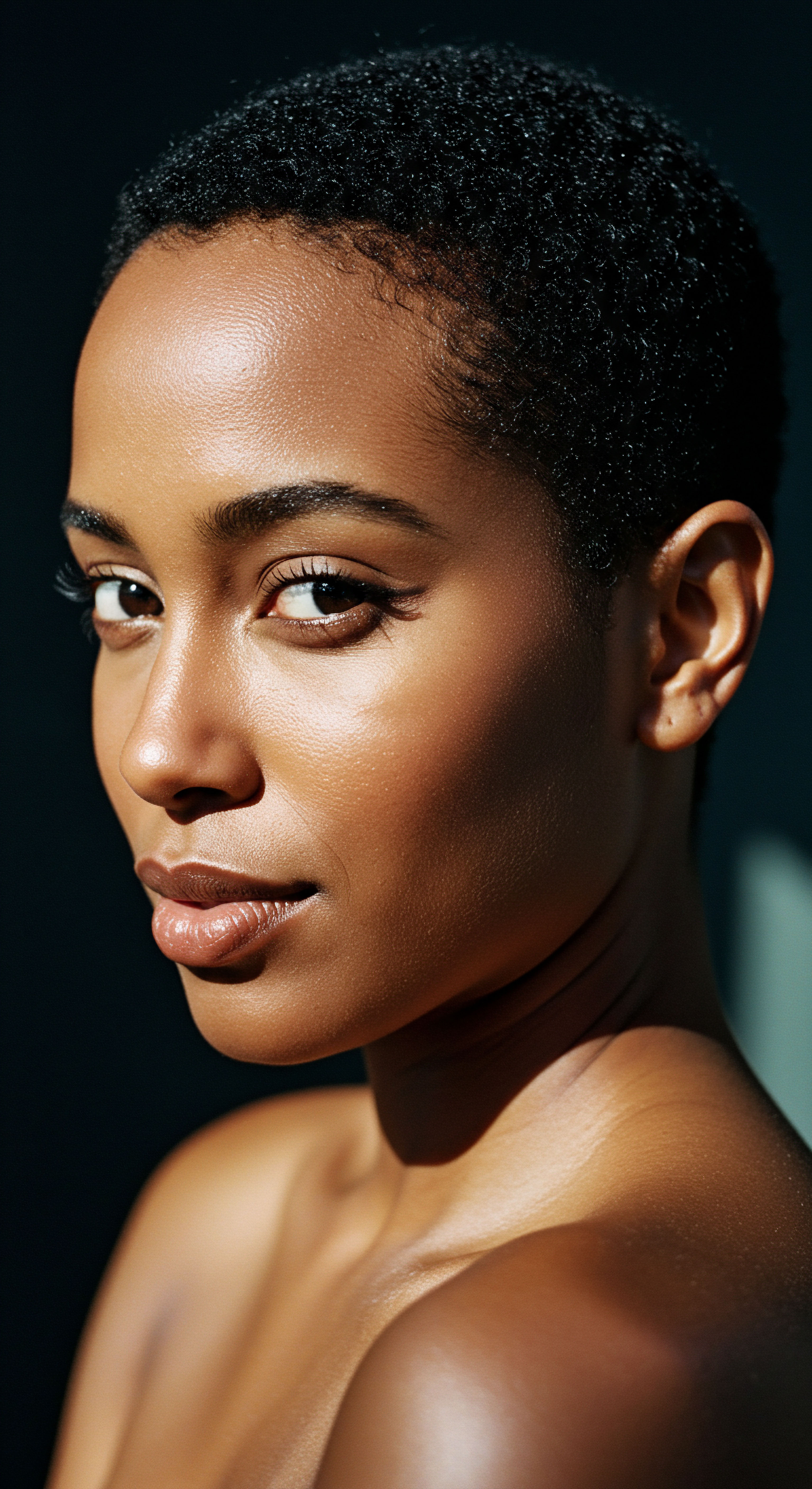
Adulthood and Social Standing
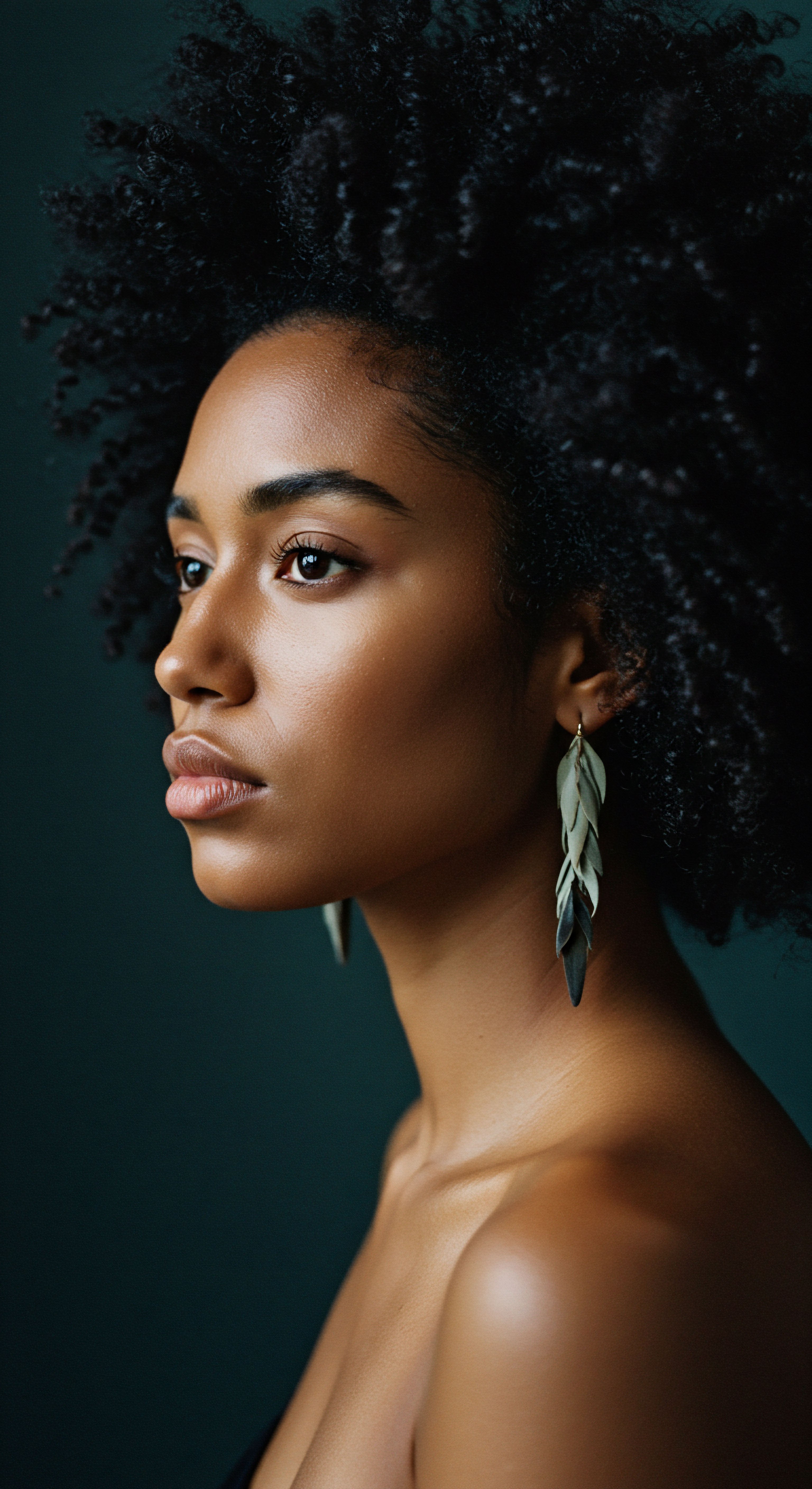
Did Hair Elaborations Reflect Marital Status?
Upon reaching adulthood, hair practices diversified considerably, reflecting not only maturity but also social status, wealth, and potentially, marital status. While direct evidence explicitly linking specific hairstyles to marital status remains less conclusive than for childhood, stylistic conventions in art provide some clues. For adult women, long hair, often plaited, curled, or worn in elaborate wigs, became the norm, particularly in the New Kingdom.
Art historian Gay Robins notes that a particular “tripartite style,” featuring tresses framing the face and a third section in a ponytail, “marked a particular stage in a young woman’s life, when she was no longer a child but still not married”. This suggests a visual distinction for young women entering the marriageable age, though it may not have been a universal rule or an explicit marital status indicator after marriage.
The ability to maintain long natural hair or, more commonly, to afford elaborate wigs, directly correlated with wealth and social standing. Wigs, made from human hair or vegetable fibers, could be incredibly costly and were a clear sign of prestige. Elite men, too, wore wigs, often short and rounded, or elaborately styled with strands, curls, or braids. The use of wigs also served practical purposes, offering protection from the sun and facilitating hygiene by allowing the natural head to be shaved underneath.
Conversely, individuals of lower social standing, especially those working outdoors, were often depicted with their natural, shorter hair, or even shaved heads. Priests and household servants were frequently shown with shaven heads, a sign of subservient status, whether to a deity or a mortal master. This visual distinction highlights how hair practices were deeply embedded within the hierarchical structure of Egyptian society.

How Did Funerary Hair Practices Convey Life’s End?
The symbolic weight of hair extended even into death. Funerary hair practices provided a powerful, albeit somber, commentary on the end of a life stage. Mourners, particularly women, engaged in ritualistic hair displays during funerals. Depictions in tombs show women shaking and pulling their hair, or covering their faces with it.
This deliberate disarray of hair was not merely an expression of grief, but a symbolic act representing the chaos and disorder associated with death. The return to an ordered state, by uncovering the face or restoring hair, mirrored the belief in the deceased’s eventual resurrection and transformation.
Furthermore, locks of hair were sometimes found carefully preserved in tombs, occasionally as offerings. A notable instance is the lock of Queen Tiye’s hair found in Tutankhamun’s tomb. While the precise meaning of these hair deposits remains a subject of scholarly discussion, they underscore the enduring significance of hair as a personal relic, potentially holding protective or regenerative power for the deceased in the afterlife. This practice continued across various periods and social strata, from Predynastic times into the Roman period.
Ancient Egyptian hair choices, from the distinctive sidelock of youth to the elaborate wigs of adults, consistently communicated a person’s passage through age and their place in society.

A Deeper Look at Hygiene and Hair ❉ A Case Study on Ancient Lice
While discussions of ancient Egyptian hair often focus on elaborate styles and luxurious wigs, a less glamorous but equally telling aspect involves the persistent challenge of hygiene. The dry climate helped preserve organic materials, including hair and its tiny inhabitants. Archaeological studies of mummified remains have revealed a widespread, often overlooked, reality ❉ the presence of head lice.
Research published in the Journal of Archaeological Science and other scholarly works indicates that ancient Egyptians, across various social classes and age groups, contended with parasitic infestations. For instance, examinations of mummified hair have frequently uncovered head lice and their eggs (nits). One such analysis, while not exclusively focused on Egypt, highlights the presence of 9,000-year-old louse eggs in hair samples from individuals in the Near East, demonstrating the ancient lineage of this issue.
Dr. Joann Fletcher, a prominent Egyptologist, whose PhD research focused on ancient Egyptian hair, has also documented the presence of lice in mummified remains, noting that the practice of shaving heads and wearing wigs was a practical measure to reduce such infestations.
This prevalence of lice, while perhaps unglamorous, offers a unique data point. It reminds us that hair practices were not solely driven by aesthetics or social display, but also by practical concerns for health and comfort. The adoption of wigs, for example, was not merely a fashion statement or a symbol of status, but also a strategic response to the difficulty of maintaining clean natural hair in a hot climate prone to infestations.
This aspect, though rarely romanticized, speaks to the daily realities of life in ancient Egypt and the pragmatic considerations that underpinned many of their seemingly opulent beauty routines. It underscores how even the most refined practices had roots in fundamental human needs, regardless of age or social standing.
| Life Stage Childhood |
| Characteristic Hair Practice Sidelock of Youth (shaved head with one long lock) |
| Associated Symbolism or Purpose Identification as a child, connection to Horus, period of protection, pre-puberty |
| Life Stage Adolescence/Young Adulthood |
| Characteristic Hair Practice Removal of Sidelock, adoption of simpler adult styles, early wigs |
| Associated Symbolism or Purpose Rite of passage, entry into adulthood, readiness for marriage (for women) |
| Life Stage Adulthood (Elite) |
| Characteristic Hair Practice Elaborate wigs, hair extensions, complex natural styles |
| Associated Symbolism or Purpose High social status, wealth, power, hygiene, protection from sun |
| Life Stage Adulthood (Commoners) |
| Characteristic Hair Practice Shorter natural hair, shaved heads, simpler coverings |
| Associated Symbolism or Purpose Practicality, social standing (less leisure for elaborate styles), hygiene |
| Life Stage Mourning/Death |
| Characteristic Hair Practice Disheveled hair, pulling hair, hair offerings in tombs |
| Associated Symbolism or Purpose Expression of grief, symbolic chaos, connection to deceased, hope for resurrection |
| Life Stage Hair served as a dynamic visual language, reflecting an individual's journey through life and their societal role. |
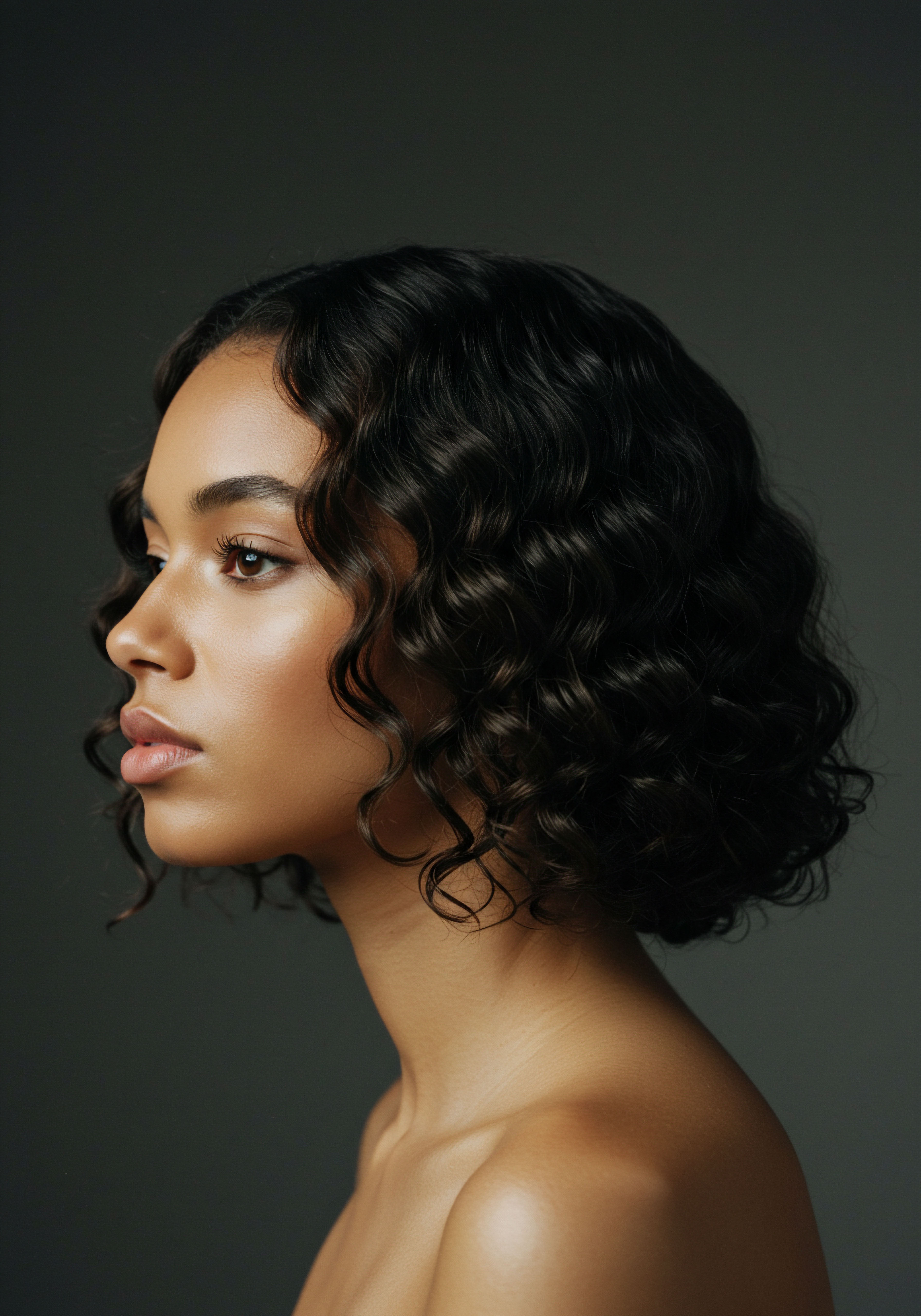
Reflection
The ancient Egyptian approach to hair offers a gentle reminder that beauty is rarely a superficial pursuit. It is, more often than not, a profound dialogue between the self, the community, and the spiritual world. The meticulous care, the symbolic styles, the very materials used in hair adornment – all speak to a culture that understood the potent messages held within each strand. As we look upon these echoes from a distant past, we find not just historical facts, but enduring lessons about identity, connection, and the quiet ways in which we present ourselves to the world, then as now.
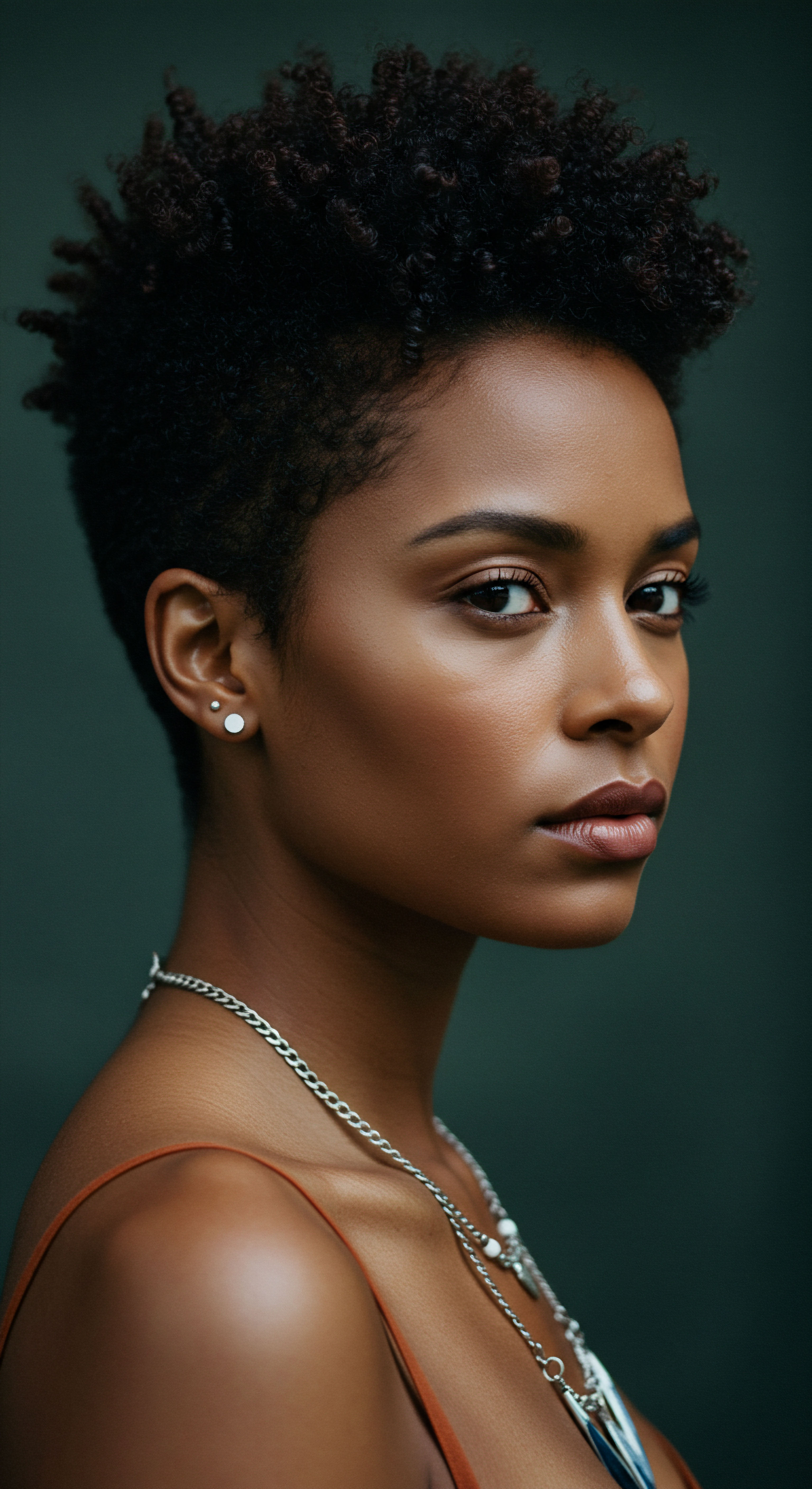
References
- Fletcher, Joann. 1995. Ancient Egyptian Hair ❉ A Study in Style, Form, and Function. Unpublished PhD thesis, University of Manchester.
- Fletcher, Joann. 2000. ‘Hair’ in P. Nicholson and I. Shaw, Ancient Egyptian Materials and Technology. Cambridge ❉ Cambridge University Press.
- Fletcher, Joann. 2016. ‘An Ancient Egyptian Wig ❉ Construction and Reconstruction.’ Internet Archaeology 42.
- Fletcher, Joann. 2016. ‘The Egyptian Hair Pin ❉ Practical, Sacred, Fatal.’ Internet Archaeology 42.
- Kandil, Hoda Abd Allah, and Mahmoud El-Mohamdy Abdelhady Salama. 2018. ‘Role of the Hair in Ancient Egypt.’ International Journal of Tourism and Hospitality Management 1, no. 1 ❉ 77-84.
- Loewe, Lorelei J. et al. 2004. ‘Molecular Identification of Lice from Pre-Columbian Mummies.’ The Journal of Infectious Diseases 197 ❉ 535–543.
- Robins, Gay. 2020. ‘Hair, Gender, and Social Status in Ancient Egypt.’ JSTOR Daily.
- Tassie, Geoffrey John. 2007. The Social and Ritual Contextualisation of Ancient Egyptian Hair and Hairstyles from the Protodynastic to the End of the Old Kingdom. PhD thesis, University College London.
- Tassie, Geoffrey John. 2011. ‘Hair-Offerings ❉ An Enigmatic Egyptian Custom.’ Internet Archaeology 30.
- Valdesogo Martín, María Rosa. 2013. Hair and Death in Ancient Egypt ❉ The Mourning Rite in the Times of the Pharaohs. Oxford ❉ Archaeopress.